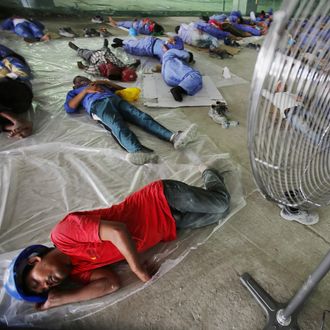
Because of global warming, by the end of this century there will be days when it will be hot and humid enough that a human would not be able to survive outside in the Persian Gulf.
A study published Monday predicts that by 2100 muggy conditions would prevent the body from reducing its temperature through sweating, putting anyone without air conditioning — or anyone working outdoors — at risk of death, the Times reports.
Previous studies had suggested that these conditions might appear in the next 200 years, but the new report, published in Nature Climate Change, speeds up that timeline.
Scientists predict heat indexes will reach 165 to 170 degrees more and more frequently in the next 100 years during the summer months, Fox News reports. Normal summer temperatures will be roughly 113 degrees.
“When they happen, they will be quite lethal,” Dr. Elfatih A. B. Eltahir, of the Massachusetts Institute of Technology, told the Times.
Temperatures in the UAE, Qatar, Kuwait, Iran, and Saudi Arabia are already sweltering. But this summer a combination of temperature and humidity made one Iranian city feel like 164 degrees Fahrenheit.
Research also links climate change to increased conflict. After the Arab Spring in 2011, Syria was entrenched in a three-year drought, the worst in history, Wired reports. The groundwater reserves were sucked dry, and people ended up moving to urban areas. This led to increased unemployment, inequality, and high tensions — which ultimately reached their boiling point.
It is unlikely that Dubai’s recent announcement that it is going to build the world’s longest indoor ski slope will help things much.





























